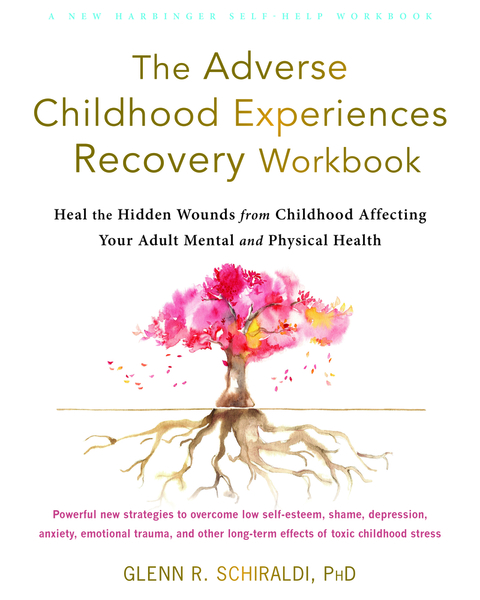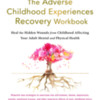So many people are struggling with unhealed, hidden wounds from toxic childhood stress. For some the pain is obvious. Others might look outwardly strong, capable, and in control. However, unhealed inner wounds cause needless suffering and can lead to a dizzying array of psychological, medical, and functional problems.
This three-part blog discusses the road to recovery. Part I explained “The Principles of Healing.” This part explains why traditional treatments are not usually the best starting place, and what kinds of approaches typically work better. Part III will discuss new and promising treatments, which can be used alone or in combination with self-managed skills.
Why Traditional Therapies May Not Be the Best Starting Place
French neurologist and psychotherapist Pierre Janet understood that putting unspeakable memories into words facilitates the healing process. Speaking about traumatic childhood memories is indeed a useful end goal, which helps to calm the arousal centers of the brain and integrate and settle these fragmented memories. However, asking an ACEs survivor to talk about early childhood adversities might not be an effective place to start the therapeutic journey. For several reasons, the survivor might resist talking about old troubling memories. For example:
- The survivor might fear that talking about traumatic memories will be overwhelming, stirring up disturbing emotions that the person doesn’t know how to control.
- The survivor might fear that once control is lost it won’t be regained.
- The survivor might find it difficult to trust the therapist, fearing embarrassment for losing control or expressing vulnerabilities. This might reflect a general distrust of others learned from childhood.
- The survivor might just want to get back to normal and ignore old inner wounds. This keeps the thorn in the side that continues to cause pain.
Developmental reasons further explain why many survivors have difficulty talking about childhood traumas early in the healing journey. Consider how the developing brain wires ACEs, storing memories in ways that talking, thinking, and willpower alone might not heal.
The Earliest Years
From the last trimester of pregnancy through the first three years of life, the brain undergoes a tremendous growth spurt The left brain, which manages reasoning, verbalizing, and conscious recall of dry facts, is not sufficiently developed or functioning (“online”) until around the third year. Thus, it is difficult for the adult to recall and put early memories into words.
The right brain, which manages stress, emotions, and social functioning, is more fully developed and dominant during these first three years and beyond for emotional processes. The right brain is responsible for storing non-verbal aspects of memories that are typically below the level of conscious awareness. The non-verbal aspects of ACEs memories include:
- Images, facial expressions, and gestures
- Senses (touch, smell, and so forth)
- Visceral experiences—bodily states, such as nausea or tightening of the gut, chests, or throat
- Survival tendencies—such as the impulse to run, attack, freeze, hunch the shoulders, slouch, and so forth
- A wordless felt sense of self and the world—discomfort that one can’t seem to shake. This includes shame (the sense that one is not good enough) or nameless dread (the fear that the world is dangerous and something bad will happen.) These pervasive perceptions are usually experienced deep in the body and are difficult to describe in words or figure out where they come from.
Beyond the First Three Years
Memories that are stored non-verbally and beneath conscious awareness are called implicit memories. Implicit memories can be stored particularly during the first three years of life, before the left brain is online. After this time, memories can be stored implicitly whenever a person faces overwhelming stress. Overwhelming, or toxic, stress causes the left brain to go off-line. When an intense stress response kicks in, the brain determines that survival—fighting, fleeing, or freezing—overrides the need to think logically and verbalize. There’s no time to talk or think your way out of the situation. The brain’s concern now becomes activating strong emotions that stimulate movement. (In particularly dire circumstances, such as when movement is thwarted by a much stronger perpetrator, one might freeze or collapse as a way to survive.) Regions of the brain responsible for calming and feeling whole and connected to self also go offline during overwhelming stress.
The Course of Implicit Memories
At whatever stage of life they occur, implicit memories are lodges in the right bring, with its deep neural connections to brain regions concerned with survival and emotions. Thus, implicit memories might not be accessible to words and logic. So it can be very difficult to talk or reason someone out of a felt sense that wasn't imprinted through talk or reason. For example, a caretake might shame a two-year-old with looks of disgust or with an angry tone of voice. This experience, the frightening feeling of being unloved, might become stored implicitly. Not a word need to be spoken for the infant to internalize an ingrained sense of shame.
Later in life, that person might still have that deep felt-sense of shame, despite outward success. Recent events, such as criticism from a boss, might trigger this buried sense of shame with its strong feeling tone, but the person can’t easily link present reactions to old memories or put into words what is happening.
Newer Approaches Often Work Better
To summarize, quoting from The Adverse Childhood Experiences Recovery Workbook (p.49) “Relating your story in words and replacing unreasonably negative thoughts calm the arousal centers of the brain and help complete the healing process. However, trauma memories, which are situated in the visual, emotional, and survival brain regions, might initially be inaccessible to words and logic. Therefore, many of the effective treatment modalities do not rely primarily on words and logic. Rather, they access implicit memories with minimal or no verbalizing.”
Newer approaches to rewire implicitly imprinted memories of ACEs start with strategies that target areas of the brain that regulate images, emotions, and bodily sensations. These strategies involve imagery, emotional regulation, and body-based skills, which we’ll explore further in Part III. These strategies rely less on left brain functions of words and logic at first. Rather, they interweave old disturbing memories with calm, nonjudgmental acceptance.
About the Author
Glenn R. Schiraldi, PhD, has served on the stress management faculties at The Pentagon, the International Critical Incident Stress Foundation, and the University of Maryland, where he received the Outstanding Teacher Award in addition to other teaching/service awards. His books on stress-related topics have been translated into seventeen languages, and include The Adverse Childhood Experiences Recovery Workbook, The Resilience Workbook, The Post-Traumatic Stress Disorder Sourcebook, and The Self-Esteem Workbook. The founder of Resilience Training International (www.ResilienceFirst.com), he has trained laypersons and clinicians around the world on various aspects of stress, trauma, and resilience.


Comments (0)